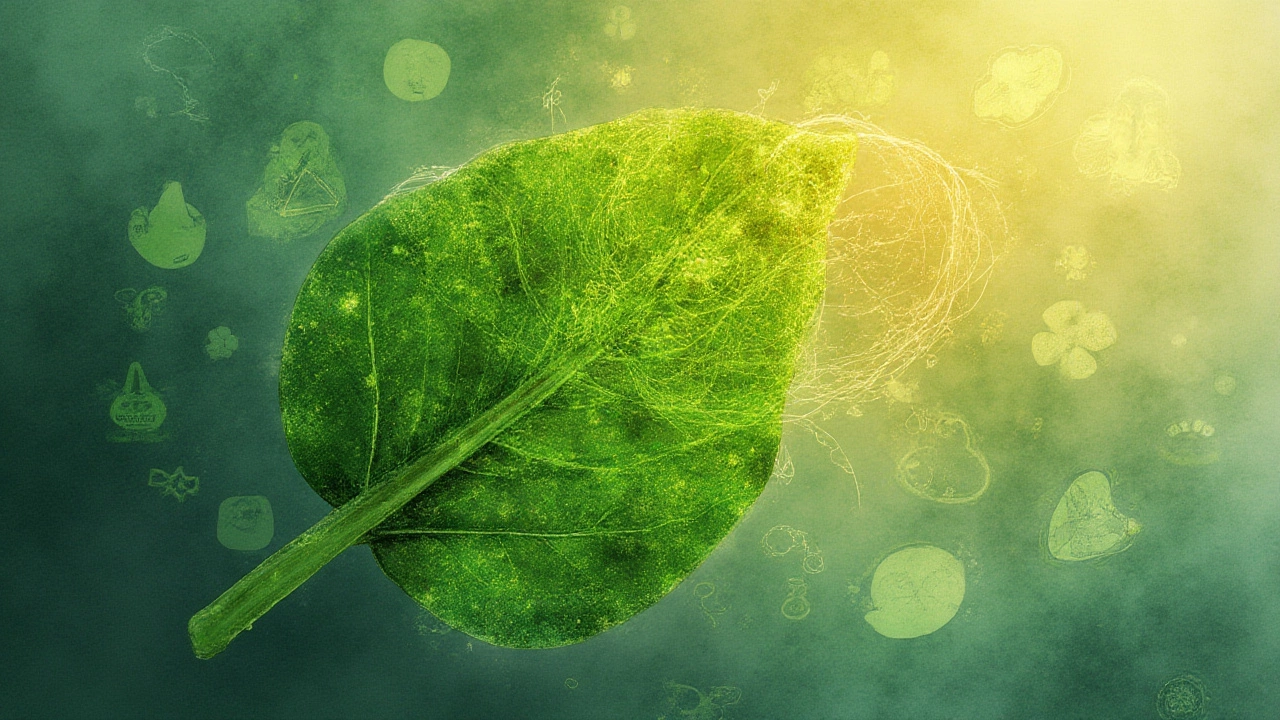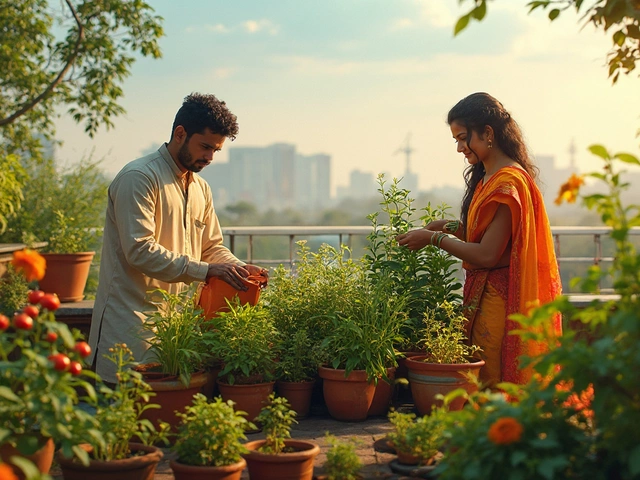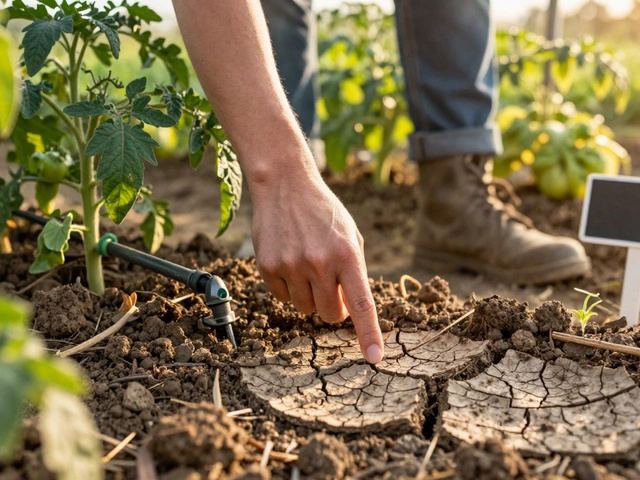When most people think of a superfood, they picture kale blends in green smoothies or spirulina powder sprinkled over their morning yogurt. But as far as vegetables go, what's actually at the top of the mountain? There's no shortage of legends, trends, and TikTok hacks—but if we trust science and nutritionists, only one veggie claws its way to the very peak. Let’s cut through the hype and dig into the actual winner. Hint: It’s green, crunchy, and slightly bitter. You’ve probably walked right past it a hundred times, thinking it belongs more in grandma’s garden than your own kitchen. Ready? Meet broccoli—the reigning superstar of the vegetable world.
What Makes Broccoli the No 1 Healthy Vegetable?
Broccoli’s rise to the top isn’t random. This sturdy cruciferous vegetable delivers a combo punch of vitamins, minerals, and unique plant compounds that few others can match. For starters, just one cup of raw broccoli packs almost 90% of your daily vitamin C needs, plus hefty amounts of vitamin K and folate. It also contains iron, potassium, calcium, selenium, and fiber. But broccoli’s real muscle comes from its secret weapon: sulforaphane, a natural plant chemical shown to supercharge your body’s defenses against chronic diseases.
Studies have shown that sulforaphane helps fight inflammation, supports detoxification at the cellular level, and can even trigger your body’s own cancer-busting enzymes. Broccoli is one of the few vegetables consistently linked to a reduced risk of heart disease, thanks to its ability to lower bad LDL cholesterol. That’s no small potatoes—cardiovascular disease is still the top killer worldwide, and a cup of raw broccoli won’t cost you more than a few coins or calories.
Here’s where things get even more interesting: Broccoli is loaded with antioxidants like lutein and zeaxanthin (great for your eyes) and contains enough fiber to help regulate digestion and blood sugar. It’s one of the lowest-calorie vegetables you’ll find, making it a favorite for folks tracking their weight or managing diabetes.
Curious how it stacks up against other heavy hitters? Check out this quick comparison:
| Vegetable | Calories (per 100g) | Vitamin C (% Daily Value) | Fiber (g) | Sulforaphane Content |
|---|---|---|---|---|
| Broccoli | 34 | 148 | 2.6 | High |
| Spinach | 23 | 47 | 2.2 | Low |
| Kale | 49 | 200 | 4.1 | Moderate |
| Carrots | 41 | 9 | 2.8 | None |
Notice how broccoli offers a solid mix of nutrients and a unique edge with sulforaphane, which you won't get from carrots or even spinach. The bottom line? Broccoli packs more punch per serving than just about anything else in the produce aisle.
Here’s a fun fact: In the early 2000s, a study tracked thousands of participants and found that people who regularly ate broccoli (as little as once a week) had a 20% lower risk of developing certain types of cancers compared to those who skipped it. That’s huge for something that’s dirt cheap and widely available.
The Power Ingredients Inside Broccoli
This green cluster isn’t a one-trick pony. Let’s break down exactly what you get in every handful. First up: vitamins. Broccoli is rich in vitamin C—not just immunity-boosting, but also essential for collagen production (think vibrant skin and healthy joints). If you want strong bones, pay attention to broccoli’s vitamin K content, which rivals leafy greens like kale. You also get a decent amount of vitamin A, important for eyesight and keeping your skin glowing.
Beneath the surface, broccoli brings B vitamins too, especially folate (vitamin B9) for cell repair and growth—crucial during pregnancy and for supporting your brain. Trace minerals like selenium and zinc are there, working behind the scenes for immune function and cell defense. And don’t forget fiber—unlike trendy juices that strip fiber away, eating broccoli gives your gut the delicious roughage it craves.
Now, what’s all this buzz about sulforaphane? Technically, broccoli doesn’t contain it right away. What you get is a precursor called glucoraphanin, and when you chew, chop, or lightly cook broccoli, an enzyme called myrosinase activates—magically transforming glucoraphanin into sulforaphane. This process is one reason why chopping and resting broccoli before cooking can actually boost its health benefits.
Scientists keep learning more about how sulforaphane does its magic. It’s shown to protect DNA, boost natural antioxidants in your body (like glutathione), and promote healthy bacteria in your gut. New studies hint that it may even help balance hormone levels and protect your brain from age-related decline.
Let’s not leave out the lesser-known players. Broccoli contains indole-3-carbinol and kaempferol, both plant compounds studied for their anti-inflammatory and cancer-protective effects. Indole-3-carbinol can even help your body break down excess estrogen—a hidden benefit for hormone balance in both men and women. Kaempferol? Some research links it to heart protection and even allergy relief.
Even the stalks, often chopped off and tossed, are edible and nutritious. They contain extra fiber, a lot of potassium, and a milder flavor. Next time, try peeling and thinly slicing the stalk for stir-fries or salads. You’ll get more crunch and nutrients and reduce kitchen waste too.

Broccoli in Daily Life: Beyond the Salad Bar
If the only broccoli you’ve ever met was soggy and overcooked, you’re in for a surprise. There’s a world of tasty ways to eat it, without falling back on bland steamed florets. Broccoli is insanely versatile. Eat it raw—chopped into slaw, diced into salsa, or served with hummus for a crispy snack. Give it a quick blanch to keep the crunch and make the nutrients more available. Roasted broccoli, tossed with olive oil and garlic at high heat, brings out a nutty, savory flavor that’s almost addictive.
If you love simple food prep, throw it on a pan with your other favorite veggies, or roast with parmesan for a little extra bite. Stir-fries are a classic match for broccoli, as it soaks up sauces and keeps a satisfying texture next to soft noodles or rice. Toss it on pizza, mix into omelets, or whizz into soups for a creamy green boost. And don’t let the leaves go to waste—they’re edible, and even higher in nutrients than the florets sometimes.
Not convinced yet? Broccoli makes a smart addition to almost any diet. If you’re trying to get more plant-based meals into your week, broccoli’s protein content (about 2.8 grams per cup) adds up fast. For people watching their carbs, it’s a tasty substitute for rice or potatoes. You can even mash it like potatoes, or blitz it into a “broccoli rice” for a grain-free bowl.
Kids won’t eat their greens? Try tossing steamed or roasted broccoli with a cheesy sauce, or add it to pasta with a squeeze of lemon. Crunchy broccoli slaw works well in tacos or as a burger topping for the little ones. If you pickle the stems, you get a tangy snack—not bad for a veggie most of us have only known steamed.
And here’s a tip for getting maximum nutrition: Cook broccoli lightly, or eat it raw. Overcooking can lower vitamin C and smash sulforaphane content, so shoot for quick blanching, sautéing, or roasting. Adding mustard seeds or powder to cooked broccoli re-activates that special enzyme, boosting sulforaphane levels again. Science meets kitchen tricks.
- Chop and let broccoli rest for 40 minutes before cooking to maximize sulforaphane.
- Drizzle with lemon juice or vinegar to enhance iron absorption.
- Pair with healthy fats (like olive oil) to help your body use fat-soluble vitamins.
- Store broccoli unwashed in the fridge, inside a plastic bag with holes—it’ll keep fresh longer.
Common Questions and Unexpected Facts About Broccoli
There’s always more to the story. A lot of folks think broccoli is all hype and no flavor. Truth is, it was first cultivated as far back as the Roman Empire, and its Italian name literally means “the flowering crest of a cabbage.” We only started seeing broccoli all over supermarket shelves in the 1920s, thanks to Italian immigrants growing it in the United States.
Still not sure if you should load up your basket? Here are a few lesser-known facts:
- Broccoli is one of the richest sources of vitamin C among all vegetables.
- The leaves and stems of broccoli hold as much nutrition as the heads—sometimes more.
- Even frozen broccoli holds onto most of its antioxidants and vitamins. Just don’t overcook it.
- Broccoli sprouts (three to five days old) have up to 100 times more sulforaphane than mature broccoli. Perfect for topping sandwiches or salads.
- The infamous broccoli “smell” comes from sulfur compounds that also boost detoxification in your liver. Your nose isn’t wrong; your body is just trying to help you out.
- Researchers found that broccoli-lovers may have a more diverse and healthy gut microbiome. Good news for long-term digestion and immune defense.
- Got picky eaters or trouble digesting it raw? Try lightly steaming or blending into soups; it makes broccoli easier on your stomach and still keeps nutrients up.
- Not all broccoli tastes the same. Different varieties—like purple sprouting, broccolini (baby broccoli), or Romanesco—offer their own flavors and textures, but bring similar health benefits.
Last but not least, here’s a conversation starter: In 1990, President George H. W. Bush famously declared he hated broccoli, banning it from Air Force One. Sales shot up anyway, and nutritionists never missed a beat showing why he missed out on serious nutrition points. Turns out, the joke’s on him, as broccoli reigns now as the king of health food lists everywhere.





